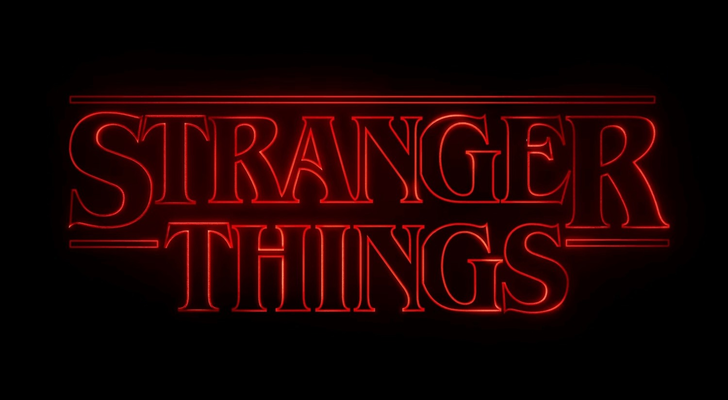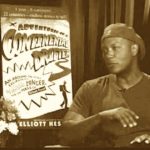Stranger Things became a Netflix hit this summer by offering viewers a sci-fi-horror tale that felt fresh and original, even as it covered familiar narrative territory. Much has been said about its pitch-perfect 1980s feel, but its nostalgic elements wouldn’t have worked had they not been rooted in first-rate storytelling. In addition to creating memorable, sympathetic characters, the show had a brilliant knack for pulling viewers into its core mysteries, striking a sharp balance between which secrets it revealed and which secrets it withheld (from both its characters and the audience).
Studying teleplays is a great way for aspiring screenwriters to get into the creative architecture of a show like Stranger Things. In particular, studying the show’s pilot script is a useful way to get a sense for how its creators (in this case the Duffer Brothers) chose to establish the world of the story, introduce its characters, and leave the viewer wanting more.
For writers, a big part of this exercise is understanding that — as a collaborative medium dependent upon scores of technicians and artists to help create the final story — a given script is going to contain significant differences from what ends up on the screen.
Fans can also gain a lot from reading a show’s pilot script, since it offers the engaged reader a glimpse into the world of the story as it existed before it was fine-tuned by the hundreds of factors (including budget, location, and casting) that go into shooting a TV drama.
Here are five ways the setting, story and characters in the first episode of Stranger Things differ from what was written in Montauk, the show’s pilot script.
1) The Pilot Script Says It All Happens in a Beach Town

The most immediate difference between the show’s pilot script and its eventual first episode is evident in Stranger Things‘ working title, Montauk — named for the New York beach town that was supposed to serve as the setting. Though producers eventually moved the story to Indiana (and its shooting location to Georgia), the original script featured teenagers throwing seaside bonfire parties, Joyce Byers speaking with “a Long Island accent, which comes out even stronger when she curses,” and Will Byers sprinting down a moonlit beach after ditching his bicycle to flee the demogorgon.
The pilot script makes no mention of the U.S. Department of Energy-sponsored Hawkins National Laboratory; instead, Montauk’s sinister government facility is called “Camp Hero,” the history of which is hinted at in a series of opening title-captions:

This pilot-draft opening gives us more big-picture context and foreshadowing (and less big-picture mystery) than we’re offered in the entire first season of Stranger Things. It also establishes the story as something that happened in the past, rather than implying, as the show does, that 1983 (or 1980, according to the script) is the world of the present.
 Unlike Hawkins National Laboratory, Camp Hero exists in the real world, on Long Island, and once hosted a military installation called Montauk Air Force Station. According to conspiracy theorists, this military base was the site of the Montauk Project, a secretive government experiment dedicated to developing mind-control and psychological-warfare tactics. Since rumors surrounding the alleged project focus on paranormal experimentation, telekinesis, and the abduction of children as test subjects, it’s easy to see how this Montauk-based myth influenced the world of Stranger Things.
Unlike Hawkins National Laboratory, Camp Hero exists in the real world, on Long Island, and once hosted a military installation called Montauk Air Force Station. According to conspiracy theorists, this military base was the site of the Montauk Project, a secretive government experiment dedicated to developing mind-control and psychological-warfare tactics. Since rumors surrounding the alleged project focus on paranormal experimentation, telekinesis, and the abduction of children as test subjects, it’s easy to see how this Montauk-based myth influenced the world of Stranger Things.
Why this change was good for the show: Though moving the setting from Long Island to Indiana was a practical-minded production decision, it also means that the show’s fictional universe doesn’t have have to compete with real-life speculations about the Montauk Project (even as it draws on aspects of its myth). Less conspiracy-theory context means that more is left to mystery — and more mystery heightens the unsettled tension of not knowing what to expect from this place and its characters.
2) Mike is the One Who’d Make More Money in a Freak Show

Among its many artistic influences, Stranger Things draws on the classic teen-movies of the 1980s — and no eighties teen-flick is complete without bullies. In the show’s first episode, two junior-high louts pick on Mike, Lucas, and Dustin outside of school, snidely speculating on which boys might “make more money in a freak show.” They settle on Dustin, whose cleidocranial dysplasia has left him with a missing row of front teeth.
In the pilot script it’s not Dustin but Mike who has a deformity — specifically a birthmark spread across his left cheek. When bullies James and Troy accost him at school, Mike is walking by himself, and ignores their taunts until they go away.
This isn’t the only change in the three friends’ dynamic from teleplay to television. In the pilot script it is Lucas — not Dustin — who harbors a crush on Mike’s sister Nancy. On the screen Dustin tries to charm Nancy by offering her a slice of pizza, whereas the script has Lucas furtively peeking through a crack in her bedroom door in the hope of catching her reflection in a vanity mirror.
So does that mean the Duffer Brothers initially wrote their lone black character as a creepy peeping tom? Actually, pilot script doesn’t indicate Lucas’s race; it just says he’s 12, and that “he is very small, but his loud mouth more than makes up for it” (it also says that Dustin wears glasses). This would seem to indicate that Lucas’s ethnicity was casting choice rather than a scriptwriting one.
Why this change was good for the show: It’s inevitable (and in the best interest of the story) that a show’s characters will transform once actors have been cast in the roles. Gaten Matarazzo, the young actor who plays Dustin, actually has cleidocranial dysplasia — a condition that’s subtler than a facial birthmark, even as it draws the attention of bullies. Having Dustin court Mike’s sister by offering her pizza (rather than having Lucas spy on her) also plays to subtlety, as it gives us a more amusing and memorable first glimpse of Nancy.
3) Eleven Can See Into Benny’s Past

One of the most jarring twists in Episode One is when Benny Hammond, the compassionate proprietor of Benny’s Burgers, is murdered by government agents when Eleven takes refuge in his restaurant. Benny doesn’t get a lot of screen-time, but his rough-edged humanity makes the viewer care about his fate.
In the pilot script Benny owns a seafood joint called Benny’s Fish ‘N Fry, where, instead of discussing basketball (as folks do in Hawkins) his clients speculate on whether a local fisherman named Earl is going to follow through on his plans to feed chickens to great white sharks. Eleven has to sneak past Benny’s Rottweiler (whom she later befriends) to get into the kitchen, where — instead of eating french fries — she gnaws on a deepwater cod stored in the freezer.
Later in the script, Benny (who is about a decade older than he is in the show, and sleeved with tattoos) has established a fatherly affection for Eleven, but he is unsettled by her seeming ability to know things he never told her:

The fact that Eleven can see into Benny’s past implies that she has clairvoyant abilities beyond what later appears in the show, but — since agents murder Benny (and his Rottweiler) moments later — we don’t learn any more about the exact nature of these powers.
Why this change was good for the show: Actually, it would have been nice to have retained these interesting personal details about Benny and Eleven’s interactions, but they were likely cut in the edit for time and focus considerations. Also, a sci-fi-horror show must be careful about the parameters of its supernatural characters — and revealing Eleven as a person who could see into people’s pasts might have created narrative contradictions down the line (particularly as she gets to know Mike).
4) Nancy is More Rebellious, Steve is a Bigger Jerk

Nancy’s high-school paramour Steve is romantically aggressive in both the script and screen versions of Stranger Things, but the script shows Nancy taking a more active role in their liaisons.
When, in Episode One, Nancy insists on staying home and doing her chemistry homework, Steve goes to her house, climbs the drainpipe, and sneaks into her bedroom on the dubious pretext of helping with her with her studies. The pilot script, on the other hand, shows Nancy crawling out of her own window and sliding down the drainpipe so she can sneak off and meet Steve at a beach bonfire-party.
This would seem to mirror the Tuesday-night pool party Nancy attends in Episode Two of Stranger Things — but even then she uses a school activity (rather than a drainpipe) as her escape ploy. By this point the show has established enough nuance in Nancy and Steve’s relationship that it feels believable when, after an extended flirtation, she consents to his sexual advances after getting out of the pool.
In the pilot script, however, Steve is blunter in his beach-party flirtations, seducing Nancy with a single-mindedness that would appear to bypass consent altogether:

Why this change was good for the show: Depicting Steve as more of a good guy (and less of a rapey jerk) makes the relationship between the characters feel more real. It also make our viewing experience more complicated, as we’re not always sure who to root for. Making Nancy less rebellious makes her more conflicted, and thus more fragile and relatable. This creates its own tension, especially when it comes time for her to take action.*
5) A Less-Loyal Barb Disappears By Way of the Beach Party

When Stronger Things first debuted on Netflix last summer, the unexpected cult-hero of the show was Barb, Nancy’s frumpy, bespectacled best friend. Barb’s disappearance into the Upside Down didn’t get nearly as much screen-time (or concern from the main characters) as Will Byers’ did, and many of the show’s online fans took issue with this omission.
Upside Down torments aside, it’s easy to see why viewers sympathized with Barb, who handles her best friend’s bad-boy love affair with an admirable sense of decency and loyalty. When Nancy steals away to hook up with Steve at the pool party, Barb sticks around out of concern for her friend (a choice that ultimately leads to her doom).
In the pilot script, Barb is less fixated with her friend’s well being than her own irritation at Steve’s friends. With Nancy off getting deflowered in the dunes, Barb tires of the drunken beach-party and leaves without her. She doesn’t get far, however: Struggling to start her VW amid a sudden swirl of blinding light and shrieking static, Barb disappears.
Later, we see her wandering an empty beach, blood oozing from her ears:

The screenplay doesn’t say what happens next, but optimistic Barb fans might take heart in the fact that — in the world of this particular pilot script, at least — she is still alive when we last see her.
Why this change was good for the show: Craig Mazin of the Scriptnotes podcast has pointed out that, from a writing point of view, the Barb character exists so that viewers will know how dangerous the Upside Down is for Will Byers. Had Barb been the irritable flake depicted in the pilot script, however, viewers might not have obsessed so much about her fate. But, since the Barb we see in the show makes tangible sacrifices for her friend, she comes off as more sympathetic, more worthy of our concern, even as the story keeps its focus on Will’s stakes in the Upside Down.

Note: I don’t host a “comments” section, but I’m happy to hear your thoughts via my Contact page. To learn more about what this blog is all about, read items #2 and #3 from my recent update post.
*Special thanks to Mel Toltz for her input on the “why this change was good for the show” details — particularly the observations about Nancy and Steve (which I more or less took from her verbatim).





